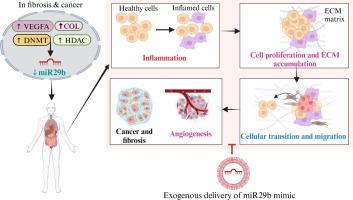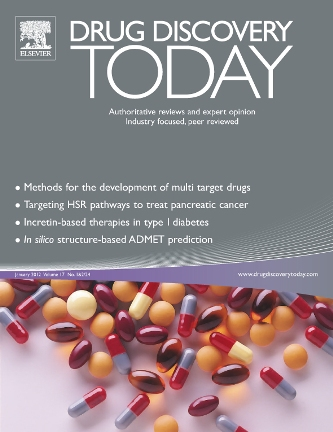癌症和纤维化中 microRNA-29b 的下调:分子见解和临床意义。
IF 6.5
2区 医学
Q1 PHARMACOLOGY & PHARMACY
引用次数: 0
摘要
众所周知,MicroRNA-29b(miR-29b)具有抗纤维化和抗癌的治疗潜力。在纤维化条件下,miR-29b 通过下调胶原蛋白、细胞外基质蛋白和转化生长因子-β 通路等关键调节因子来抑制纤维生成。同样,在癌症中,miR-29b 通过下调 Wnt-β-catenin、p38-中性粒细胞活化蛋白激酶和核因子-κB 等参与癌症进展的各种致癌基因和信号通路,起到抑制肿瘤的作用。然而,这些通路的上调会抑制 miR-29b,导致纤维化和癌症发展。临床前研究和临床试验表明,提供外源性miR-29b模拟物可以恢复其表达,从而减轻肿瘤发生和纤维化。本综述将讨论 miR-29b 的潜力及其对癌症和纤维化疾病的可能治疗发展。本文章由计算机程序翻译,如有差异,请以英文原文为准。

Downregulation of microRNA-29b in cancer and fibrosis: molecular insights and clinical implications
MicroRNA-29b (miR-29b) is known for its therapeutic potential as an antifibrotic and anticancer agent. In fibrotic conditions, miR-29b inhibits fibrogenesis by downregulating crucial regulators such as collagens, extracellular matrix proteins and the transforming growth factor-β pathway. Similarly, in cancer, it acts as a tumor suppressor by downregulating various oncogenes and signaling pathways involved in cancer progression, such as Wnt–β-catenin, p38–mitogen-activated protein kinase and nuclear factor-κB. However, the upregulation of these pathways suppresses miR-29b, contributing to fibrosis and cancer development. Preclinical research and clinical trials have shown that delivering exogenous miR-29b mimics can restore its expression, attenuating tumorigenesis and fibrogenesis. This review discusses miR-29b’s potential and its possible therapeutic development for cancer and fibrotic disorders.
求助全文
通过发布文献求助,成功后即可免费获取论文全文。
去求助
来源期刊

Drug Discovery Today
医学-药学
CiteScore
14.80
自引率
2.70%
发文量
293
审稿时长
6 months
期刊介绍:
Drug Discovery Today delivers informed and highly current reviews for the discovery community. The magazine addresses not only the rapid scientific developments in drug discovery associated technologies but also the management, commercial and regulatory issues that increasingly play a part in how R&D is planned, structured and executed.
Features include comment by international experts, news and analysis of important developments, reviews of key scientific and strategic issues, overviews of recent progress in specific therapeutic areas and conference reports.
 求助内容:
求助内容: 应助结果提醒方式:
应助结果提醒方式:


